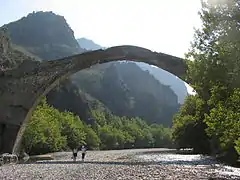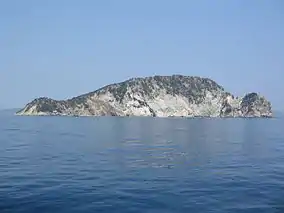National parks of Greece
Greece is characterized by an extremely fragmented, rugged landscape hosting a great diversity of ecosystems and an outstanding biodiversity. Almost 5% of its extensive coastline consists of ecologically sensitive wetlands. Two thirds of the total population live no further than 2 km from the coast and most of the important urban centers are coastal, while almost all of the tourist infrastructure is divided among islands and the coastal mainland.
Greek climate
Greece's climate is divided into three classes: A Mediterranean climate features mild, wet winters and hot, dry summers. Temperatures rarely reach extremes, although snowfalls do occur occasionally even in Athens, Cyclades or Crete during the winter. An alpine climate is found primarily in Western Greece (Epirus, Central Greece, Thessaly, Western Macedonia as well as central parts of the Peloponnese like Achaea, Arkadia and parts of Lakonia where the Alpine range pass by). A temperate climate is found in Central and Eastern Macedonia as well as in Thrace at places like Komotini, Xanthi and northern Evros; with cold, damp winters and hot, dry summers.
History
Such climatic and biological diversity, along with the rich flora and fauna that comes with it, made the need for the creation of national parks obvious as early as 1937, when the government of Ioannis Metaxas, first issued a law that established national parks in Greece. In 1938 the first national park in Greece was established, the Mount Olympus National Park, followed by the immediate creation of the Parnassos National Park.
The number of Greek national parks has grown ever since to a full number of 27. These consist of 10 National Forrests (Εθνικοί Δρυμοί), 2 National Marine Parks (Εθνικά Θαλάσσια Πάρκα) and 15 National Parks (Εθνικά Πάρκα). The distinction between National Forrests and National Parks is unclear, it seems that parks created before 1995 were called National Forrests as in the past preservation focused on such areas. An incomplete list of Greek National Parks follows:
| Name | Established | Area (ha) |
Map | Photo |
|---|---|---|---|---|
| Ainos National Park | 1962 | 2.862 |  |
 |
| Alonnisos Marine Park | 1992 | 208.713 |  |
 |
| Oeta National Park | 1966 | 7.210 |  |
 |
| Olympus National Park | 1938 | 3.988 |  |
 |
| Parnassos National Park | 1938 | 3.513 |  |
 |
| Parnitha National Park | 1961 | 3.812 |  |
 |
| Pindus National Park | 1966 | 6.927 |  |
 |
| Prespes National Park | 1974 | 19.470 |  |
 |
| Samaria National Park | 1962 | 4.850 |  |
 |
| Sounio National Park | 1974 | 3.500 |  |
 |
| Vikos–Aoös National Park | 1973 | 12.600 |  |
 |
| Zakynthos National Marine Park | 1999 | 13.500 |  |
 |
Layout
Each national park consists of a core and the area surrounding it. According to Greek Law the core cannot be smaller than 15,000,000 square metres (5.8 sq mi), with the exception of marine national parks. The surrounding area must be larger than, or at least equal to, the size of the core.
In the core of the national park, only scientific research, mild recreational activities, and the acquiring of environment related information are permitted. The creation of menageries, fish farms, the building of roads, outposts, camping and hiking infrastructures, along with woodcutting infrastructures and pastures are permitted in the surrounding area of the national park.